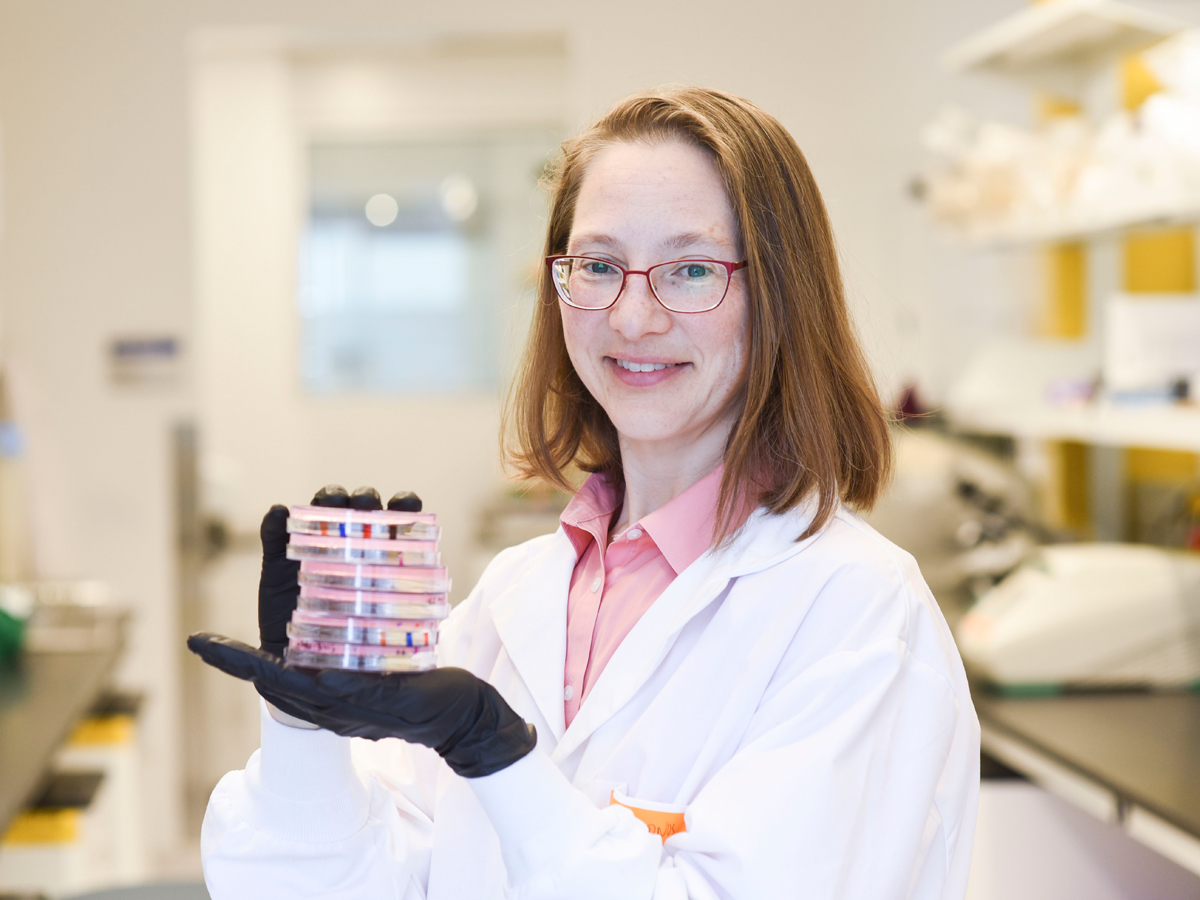How yeast may hold answers for more effective cancer treatments

Sarah Sabatinos shows the Petri dishes she uses to study yeast cells in the Ryerson MaRS Discovery District labs. Photo credit: Carrie Duncan
From the laboratories on the 11th floor of the south tower in the MaRS Discovery District, Ryerson biology professor Sarah Sabatinos is examining yeast cells in pink Petri dishes to find out how some cancer cells escape treatment.
As a “yeast geneticist,” Sarah said that on the cellular level at least, humans and yeast have a lot in common.
“They have the genes and pathways of humans, trapped inside a plant-like wall,” said Sarah. Yeast cells are excellent for lab use because they are quick-growing, making it easier to see results. As her research progresses, Sarah will test results from her work with yeast in human cells to see if she can replicate the results.
Through work supported by the Natural Sciences and Engineering Council of Canada (NSERC), Sarah uses the yeast cells to see which ones escape cancer drug treatments and go on to produce later disease. Despite drug treatment, some cells may still manage to survive and divide. Usually, cells stop dividing if they are damaged.
“They have checkpoints,” said Sarah. “It’s like crossing a border, but in cancer they lose the border guard and don’t stop. Cells keep dividing when they shouldn’t.”
Sarah added fluorescent proteins to normal cellular yeast proteins in order to study how cells are dividing and if they are doing so in abnormal ways. By adding the fluorescence, the team can capture vivid imagery of the cells and see not only the cells that continue to divide after treatment but also those that are disrupted in their division.
“We want to understand how that happens,” said Sarah. “What mutations cause that and then how do we treat those cells to stop the cancer from growing.”
DNA duplication, which happens as cells split, is really what Sarah is focusing on. “When the DNA doesn’t duplicate properly, that causes problems,” she said, explaining that this disruption is documented in cancer growth.
In addition to her work trying to figure out why some cells escape drug treatment and what makes them insensitive, her current NSERC grant focuses on how environmental factors like starving the cells or applying heat will change their responses. In her research thus far, she has found that applying certain environmental factors does have an impact. She is hoping to refine those findings to pinpoint exactly what combinations of factors are most effective at eradicating the “escapees.”